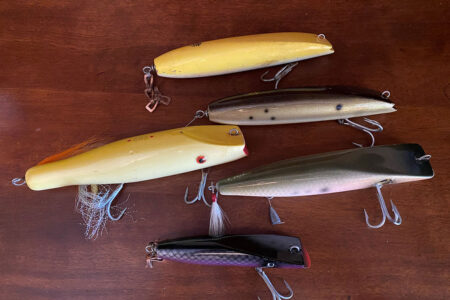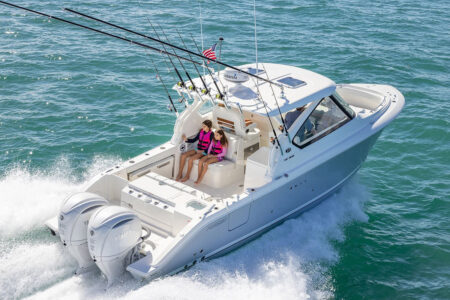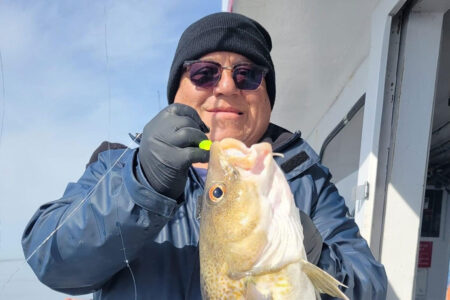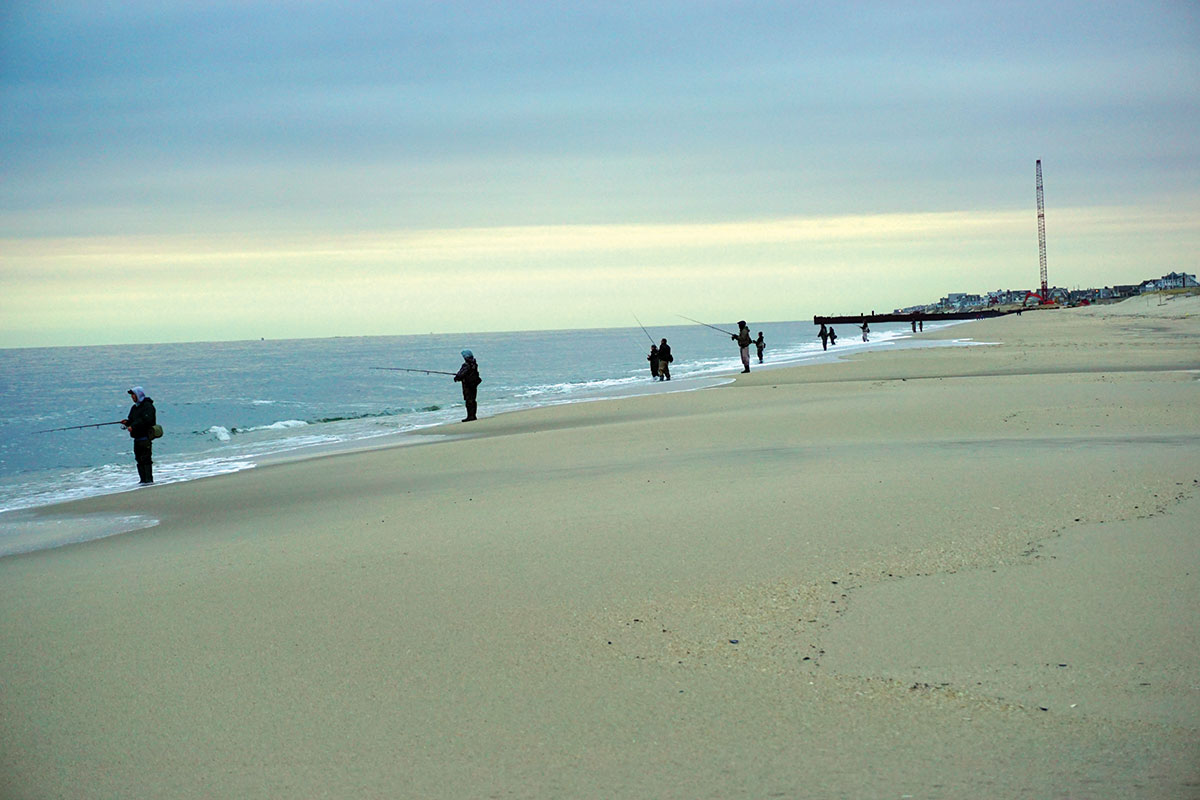
Scale down for the late run down the beach.
As far as my recollection, the last great Jersey Shore sand eel blitz came in 2011 as stripers—and more than a few big bluefin—chased sand eels into the surf up and down the coast. Most of the better action (blitz action really, double-digit catches in a short amount of time after sunup) was along the Ocean and Monmouth County stretches, but the same scenario—albeit less dramatic—occurred along pockets of Atlantic and Cape May county beaches as well.
My personal fishing logs for the time stretched between Long Beach Island and Long Beach, NY as I spent significant time then traveling each week between the two states; then the entries were marred by Superstorm Sandy showing zero effort on my behalf through the rest of that season. Folks who were not personally affected by that devastating storm did get in on some action in late fall of 2012, and for the most part the sand eels were still relatively thick in some spots, with quite a few stripers in the mix as well.
Essential Habitat
Did Sandy negatively affect the future bite? Personally, I think yes; but more the storm response than the storm itself. Going out on a limb, I’d just as comfortably throw blame directly at the state, from the New Jersey Department of Environmental Protection (on up to the governor’s office, with liberal assistance from the U.S. Army Corps of Engineers). These are the folks who raided what had been classified as “essential fish habitat” – areas like Manasquan Ridge, Barnegat Ridge, Harvey Cedars Lump, and so on and so on.
As I’d noted in a 2015 editor’s log, “Years ago, these areas were identified by state biologist Bill Figley as prime sport and fishing ground, defined specifically as locations with a demonstrable history of supporting a significant local quantity of recreational or commercial fishing activity. Curiously enough, the Figley research was done primarily as a means to protect these areas from future government incursion.”
And yet the government incurred, sucking up all that fine sugar sand, which had accumulated naturally over centuries upon centuries, “borrowing” essential fish habitat to deposit temporarily along storm-ravaged beaches. At the time, I’d asked several researchers and biologists (yeah, I was on a kick for a while) if sand eels made their home in that sugary sand found just off our beaches – sand favored by the toes of the rich and famous; while no one officially said no, I couldn’t really get anyone associated with the replenishment efforts to give me a definitive yes either, not for the record. But it sure makes sense.
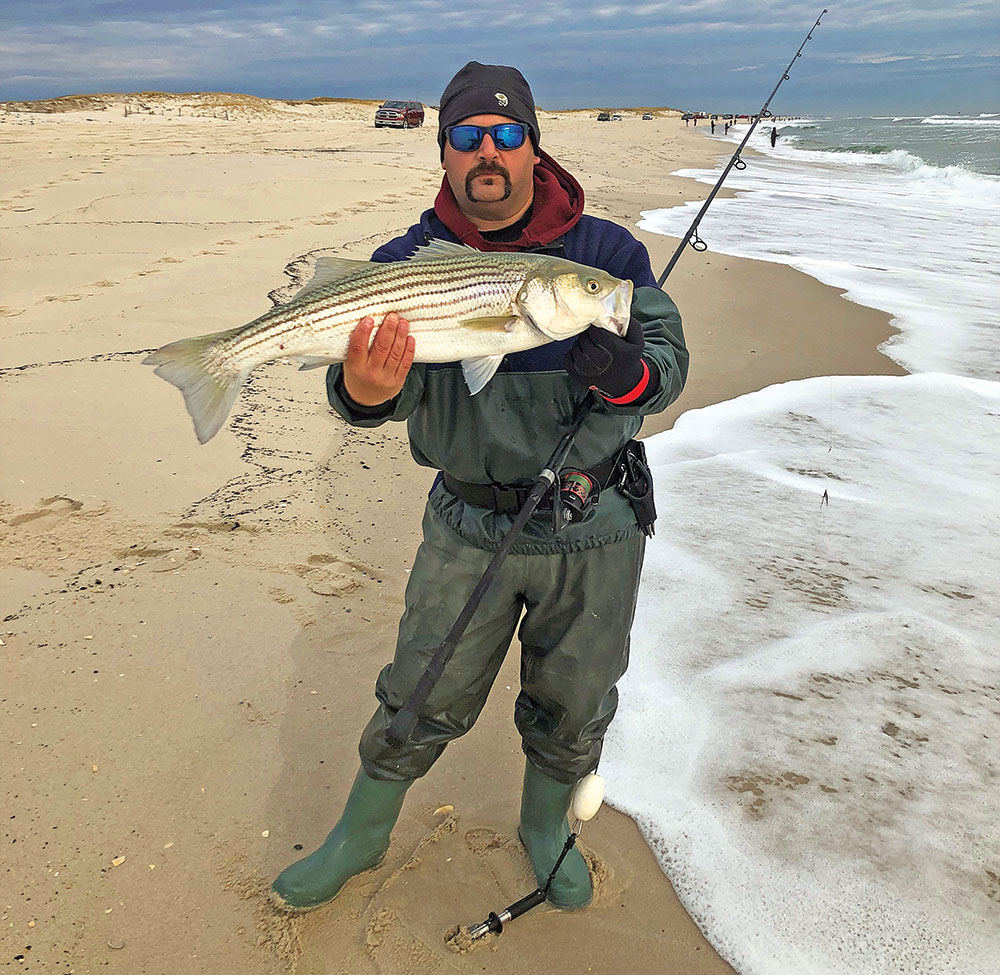
In an article at TheFisherman.com called Sand Eel Magic, Chris Paparo, a marine biologist and Senior Aquarist at Long Island’s Atlantis Marine World in New York describes sand eels as not related to eels at all but belonging to their own family of fishes known as Ammodytidae. “As their name might imply, sand eels are generally found over sandy bottoms,” Paparo noted, adding “These sandy bottoms act as a hiding place from predators. They will dart into the sand as a predator approaches. One study even found that sand eels would retreat to the sand at dark, only emerging again at sunrise.”
Take away the sandy lumps, you take away the essential habitat; no prey, no predators, and no massive sand eel blitzes, with striped bass in turn hanging farther and farther offshore where easier, more plentiful meals can be found.
Depressing? Yeah, but nature eventually takes back what belonged to her in the first place. And in terms of finding stripers on the beach this month, that sand eel magic is slowly but surely coming back inshore. It’s improved little by little in the last couple of seasons, and much of that bite has already been established along many stretches of Central Jersey coast as of November.
In addition to the chunks, the globs of clam, the plug shot at herring, and working woods and swim shads around straggling schools of bunker, make sure you’re prepared to match the sand eel hatch through the holiday season as well.
Baggin’ Basics
Sometimes you’ll see the birds wheeling and diving, other times it’s a matter of blindcasting and covering a lot of water. About the most lifelike imitation of the sand eel I’ve seen on the market and a stellar match by beach or by boat is the Tsunami Holographic Sand Eel. Available in 6-, 7-, 8- and 9-inch varieties, they do cast well and will fool your fair share of stripers; however, they don’t cast as far as a metal, so they work much better when fish are in tight. For those times when you’re blindcasting to cover area or if the fish are hanging outside, the Ava style jigs (A17 or heavier A27 or A47 version) with colored tails (keep a variety of colors like green, red, white and even black) will get the job done. Alternate the speed of your retrieve – nice and slow will stir up the bottom and attract attention – and try a variety of jigging motions from time to time to see what’s working best.
I still capitalize the ‘A’ in Ava out of respect to the Ava lure company, even though this company is no longer around. Today the diamond-styled Ava is made by a host of different manufacturers, the name having become as ubiquitous in name as Coke and Xerox. Other metals I’ll keep in my bag for the month ahead include the Deadly Dicks or slightly less expensive Tsunami Slim Waves; just remember to swap out the wimpy trebles that may be attached for a single hook or even a teaser tail. Local favorites in the suds also include the A.O.K. Tackle Company’s T-Hex Metals, Jetty Ghost tins, the S&S Tackle Pro Slim Fish in 3/4- to 4-ounce sizes, as well as the S&S Game Over Series in 3/4- to 3-ounce versions (each of the S&S offerings available in various color options).
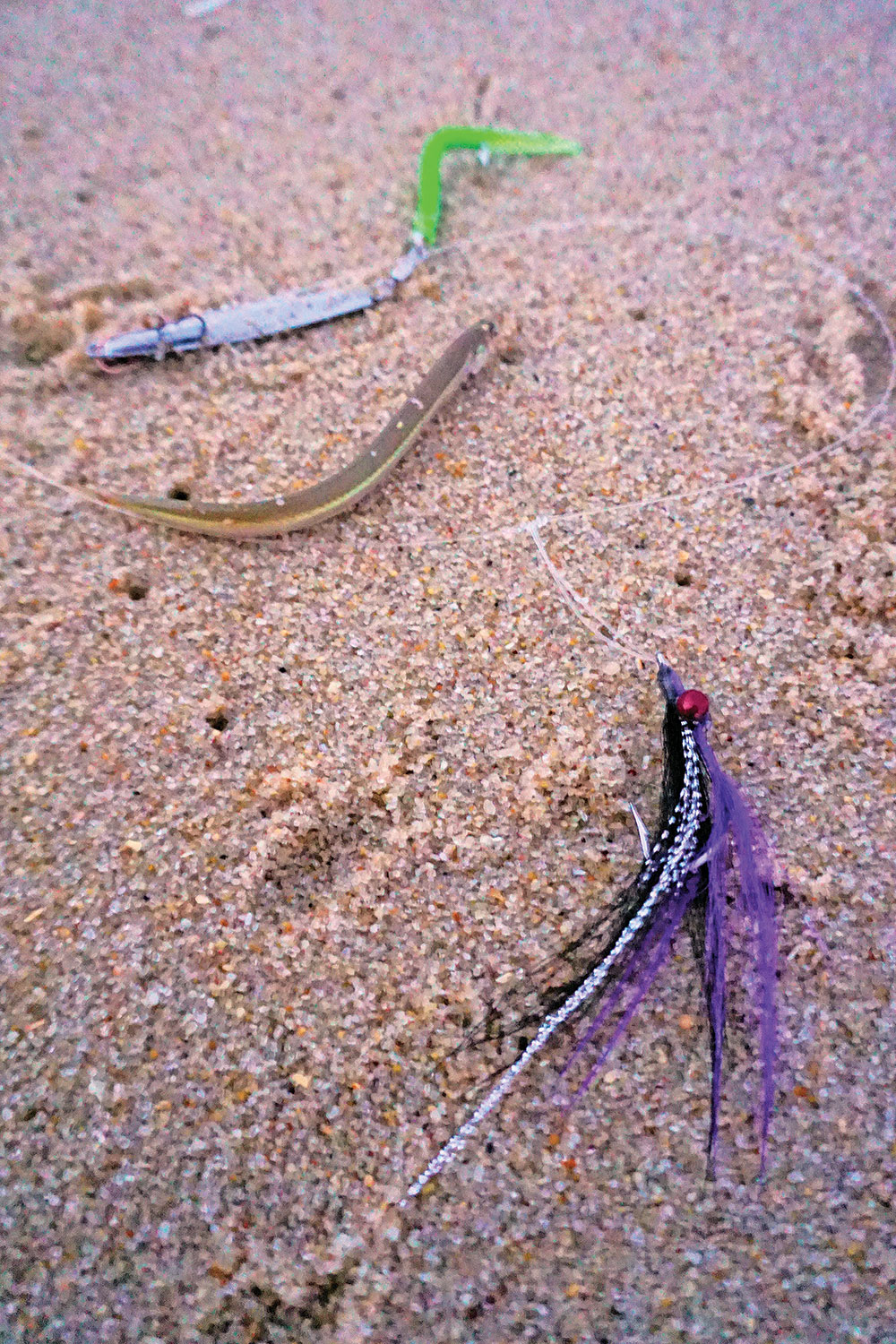
Round out your bag with a few other jig and plastic combinations like the Joe Baggs Sand Eels in 3- to 6-ounce sizes or Rapala 360GT Searchbaits, along with narrower, harder options like the Needlefish lure from Super Strike, which is especially effective when fishing lower light conditions.
Keep a slot or two in the plug pack free for what might come your way; there’s also a shot at a herring run in the winter surf and the occasional monster striper or two surely isn’t out of the question. A few larger swim shads and an SP Minnow or two should help you level the playing field should you stumble into something larger on any passing herring schools. Speaking with Mike Laptew, AKA “The Diving Fisherman,” a striped bass diet is mostly seasonal, though in his first-hand experiences underway they will often show a reference for herring when they’re around.
“However, sand eels or sand lances, when they’re big and abundant I just get the feeling that they’re the easiest meal,” Laptew told me, saying the prevalent bait for the time of year is what’s typically most effective.
In terms of how he’s seen and filmed stripers on piles of sand eels, it’s very much the same way they feed on other prevalent baits like the bay anchovy. “The way they feed on those is they just stay on the bottom, position themselves below the balled up schools, and then just swimming up, attacking and wolfing them down,” he noted.
The Big Tease
About the most important consideration for your later fall and winter jaunts to the surf is the teaser rig. Whether you’re tying up a dropper in your 30- to 40-pound max fluoro leader or come armed with a baggy full of pre-tied teasers in your jacket, it’s often that front offering that either (A) takes the hit, (B) triggers a competitive strike in a striper against the trailing lure, or (C) results in a double-header catch.
Be on the lookout in your local shop for sand eel flies tied up by local fly guys, and have an assortment of bucktail teasers in various color schemes ready to add ahead of the primary. Keep a few straight hooks (2/0 or 3/0) in your bag as well to rig up other hookless offerings like the Red Gill. In that sense, old salty flies in your collection will do the trick, and keep an eye out when walking the flea markets this season for suitable options.
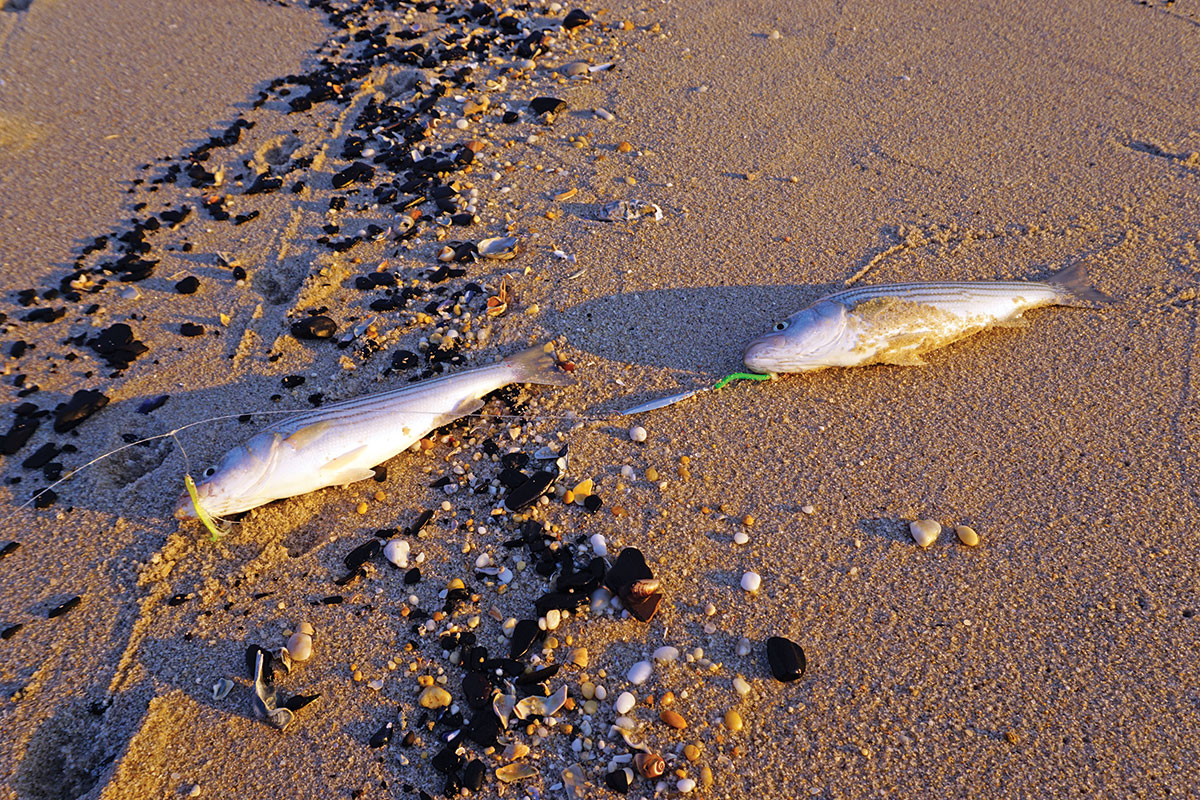
I typically prefer a longer rod whenever fishing the surf – my seasonal preference has been a 10-foot Tsunami Trophy Distance Series, a medium rod rated for 12- to 17-pound line. Those who prefer longer rods can go 9 to 10 feet in length, just keep them on the lighter side. For the most part, your favorite 7- to 8-foot spinning rod will get the job done, a St. Croix Legend Tournament edition in the 8-foot range is top shelf. Go with the lightest braid (think 20-pound braid max) you feel comfortable with, it will help when casting those soft plastics. Of course, a lot of times the smaller fish will be in the wash and practically at your feet, but I find a longer rod provides a little extra casting distance to cover more water.
That said, as with all plugging and lure blasting, don’t stop reeling until that lure and teaser combination comes to the sand in front of you. On those mindless mornings when you might make a hundred casts without a touch, the surprise you get at that very last second when a striper launches itself from the trough in front of you to grab the hook in just a few inches of water keeps me coming back for another 200 casts. And I couldn’t say how many fish I must’ve missed over the years because I stopped by presentation with 15 cranks left on the handle just because I couldn’t fathom the stripers being there in front of me, less than 10 yards away.
There’s a story I read in The Fisherman going back a few years, retelling how Tony Stetzko “rocked the Striper Coast” by beaching a 73-pound striper along the beaches of Cape Cod on November 3, 1983 while fishing a black feather teaser ahead of a 16-inch live eel. That monster bass was taken on the teaser, not the live bait. Of course, as Nick Honachefsky describes in our hot spot for the month, it was just 4 years ago this month that he got his first surf 50 on Brick Beach tossing an Ava and teaser.
Put a hand warmer in the pocket of your surf top, tape your fingers, don those wool socks and suck it up; just don’t quit yet!

